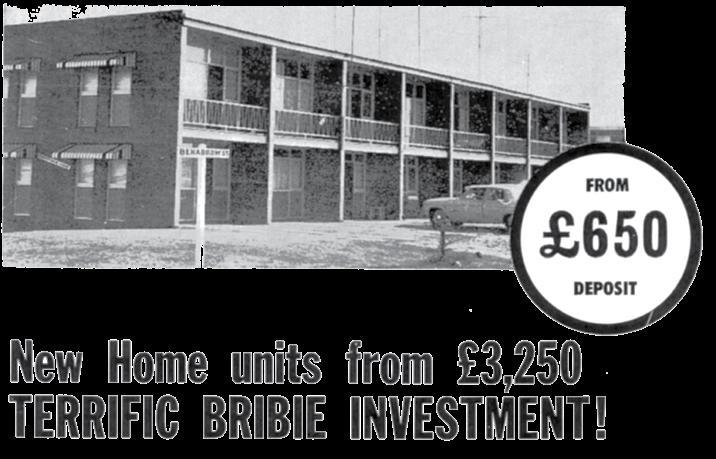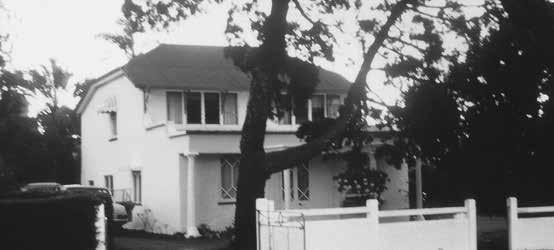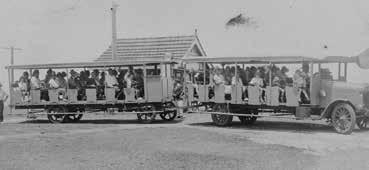
7 minute read
History
MAKING A QUID
ON BRIBIE
Advertisement
Different in the Olden Days.
The title and headline image for this article may have caught your attention. It is a 1965 advert by Ross McCowan, a Brisbane Developer who built the first block of Home Units on Benabrow Avenue, Bellara, just after the Bribie Bridge opened in 1963. He was selling a two bedroom, two story, row of seven Home Units for 3250 Pounds each ($6500) with a deposit of just 650 Pounds ($1300). Those Town Houses are still there in Benabrow Avenue, by the crossing, opposite the shops. Today we hear people, mostly Politicians, talking about BILLIONS of dollars, and Real Estate agents selling homes for MILLIONS of dollars. I find it quite hard to imagine just what that amount of money looks and smells like.
Barry Clark
How big is a pile of old one-dollar notes,
Bribie Island totaling ONE MILLION dollars.? It would be as
Historical Society
high as a 32-storey building. Now multiply that by a THOUSAND, and you would have a pile of MORE BRIBIE HISTORY one thousand million one-dollar notes, which would be ONE BILLION DOLLARS. Impossible to imagine ……but we hear that The next Historical Society figure every day.! meeting is Wednesday 11 This article puts money and time in MAY at 6;30 pm at the RSL perspective, and what people did on Bribie to Club when famous Historian make a living 100 years ago. If you are under 60 and Author Peter Ludlow years of age you will not remember that money will be guest speaker See was in Pounds, Shillings and Pence back then, more on our new Web Site until Australia changed to decimal currency in Bribiehistoricalsociety. 1966, when ten shillings became a Dollar, and a org.au and our Blog Site Pound became two Dollars. http://bribieislandhistory. blogspot.com or contact us DUGONG FISHING on bribiehistoricalsociety@ From the 1870’s pioneers were harvesting gmail.com and farming Oysters in Pumicestone Passage, grazing cattle, and cutting timber on the island and mainland. One of the first people to operate a business on Bribie was Fred Foster who hunted Dugong in the Bay and set up a small process operation at his camp on the corner of what is now Foster Street and Banya lane in the late 1880’s.

Dugong Fishermen
Having caught some Dugong, Fred Foster used a flat bottom punt to bring the carcasses to his camp beside a freshwater pond fronting the present Bribie State School. His camp was on a high spot, clear of summer flooding and he would transport the Dugong along what is now William’s creek. The creek fed a swamp about where the Seaside Museum and Bongaree Arcade is today, crossed Toorbul lane, through the church yard to his camp site. He butchered the Dugong, carved the meat for curing in a smokehouse, and sold all the meat, blubber, oils and hide in Brisbane. Processing involved the oil gently oozing from the blubber when heated on large metal plates.
You can still see the occasional Dugong in the Passage or Bay, feeding on the abundant sea grass that washes up on beaches, but numbers have declined in recent years and there may be about 800 left in this area. Interesting to see that some Bribie rubbish bins now have Dugong habitat messages on them
LAND & FOOD PRICES
When the new settlement of Bongaree was surveyed and subdivided in 1915, leasehold blocks of land sold at auction in the range of 4 to 10 Pounds ($8 to $20) . The first blocks were bounded by Banya, Nulu, Webster, Foster and Campbell streets, and other areas came later as they were initially too swampy. Even at these prices many blocks remained unsold. When Bribie’s first road track was cleared in 1924 from the Bongaree Jetty to the Ocean Beach, Wilf Cotterill, a relative of Alfred Hall recently arrived from England, set up the first shop at Woorim. Messrs. Hall and Bestmann had already established a general Store at Bongaree, and Bribie had become a popular holiday and day trip destination. The first shop at Woorim, behind the then high sand dunes and back from the beach, sold sandwiches, tea and soft drinks to visitors who walked or came on basic transport from Bongaree, across the island to swim and surf. The visitor numbers were seasonal, and Wilf Cotterill looked for other business for regular income. He became manager of a 321-acre dairy farm at Bongaree where the family prospered, also growing

large watermelons which, he sold for one shilling (10 cents), earning him the respected title of “Melon King”. They also sold pork and veal at sixpence (6 cents) a pound, and bred fowls and ducks, selling them dressed at three shillings and six pence (36 cents) each, and eggs at a shilling (10 cents) for a baker’s dozen of 13. Artie Bestmann had brought the first few cows to the island around 1915 and milked three or four in the summer which he sold at his Hall & Bestmann store. In those days the permanent population was only a few dozen people, so in winter one cow was able to supply the whole island. When Wilf Cotterill took over the farm the resident and visitor numbers were growing, so he purchased a milking herd of 50 cows and equipment, which he brought from Toorbul Point. This supplied enough milk for the islands increased summer population of many hundreds, but in the off-season milk consumption was so low that only a few were required.
TOBACCO FARM
North of Cotterill’s dairy farm, and beyond the waterway that is now called Creel Bend, land was owned by the Winston brothers who experimented with growing Tobacco. It was very successful, and good quality leaf when dried. However, in the 1930’s depression, there was little demand for Australian Tobacco and prices were low, so the venture was abandoned. After WW2 part of the farm and adjacent to Pumicestone Passage was subdivided and sold for housing development, at what was then Government regulated prices.
ATOMIC CLOCK
The Tesch family were pioneers of Bribie’s development and Ivan and Clare Tesch built the unique and recently demolished “Round House” in Banya Street, and
Winstons Tobacco Farm 1936 the earth’s atmosphere. It contained very special radio and electronic equipment, VHF Satellite tracking, Caesium beam, signal recording and an Atomic Clock for very accurate measurement. This was the cutting edge of technology at the time, and eventually led to the development of satellite communication and mobile phones. When the University needed an on-site Professional Officer to manage the station they employed Bribie resident Ivan Tesch, who held the position for the next 18 years.
GETTING A DRINK
By the late 1920’s Bongaree had thousands of visitors arriving on Steamships during weekends and holidays. When the Koopa berthed at the Jetty and 1500 passengers disembarked, it would be like 30 modern coaches all arriving at the same time in Bongaree today.. They all wanted something to eat and drink, and the few residents all had attractive offers. By the 1930’s Bongaree jetty had three access walkways to cope with the huge crowds getting on and off with their luggage. Hard to imagine today when we think Easter weekend is busy now. The Steamship operated with a “Packet License” allowing it to sell liquor under controlled conditions. The onboard bars would open or close as it passed the Hamilton Cold stores on the Brisbane River, as this was considered to be the

Transport Across The Island 1928
Temporary Hotel Cottage Ascot 1936

built what is now Saviges Fish shop, by relocating an old military Hospital from Brisbane after the War when building material was scarce. Ivan had a flair for creativity, technology and science, as his family had operated the Cinema in Caboolture for many years. When they came to Bribie after World War 2, he ran the barge ferry service, and showed films at the Church of England Hall. In 1967, the Department of Physics of Queensland University, established a scientific facility on Bribie Island known as an Ionospheric Research Station. It was on a special lease of 600 acres of land, roughly behind where the Community Arts Centre stands today. This was used to investigate the behavior of radio signals in the complex rarified upper regions of three-mile limit. The Hotel at Woorim was built in 1939, and closed during WW2 when most residents were evacuated, and the military occupied the new Hotel building. The Hotel liquor license was transferred to a cottage on the corner of Foster and Banya Street at Bongaree. That cottage is long gone, but this is what it looked like. After the War the Hotel at Woorim was reopened. Having read this article I hope you will appreciate just how things have changed over the years, and what remarkable and self-sufficient place Bribie had to be all those years ago. The names of some of those mentioned are reflected in street names to this day.







